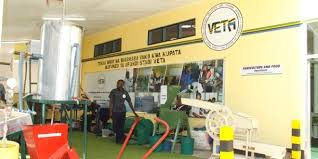A development is a flat representation or pattern that when folded together
creates a 3-D object. Sheet-metal construction is the most common
application for developments and intersections. The resulting flat pattern
gives the true size of each connected area of the form so that the part or
structure can be fabricated.
Terminology
The following terminology describes objects and concepts used in
developments and intersections:
A ruled surface is one that may be generated by sweeping a straight line,
called the generatrix, along a path, which may be straight or curved. Any
position of the generatrix is an element of the surface. A face may be a
plane, a single-curved surface, or a warped surface.
A plane is a ruled surface that is generated by a line, one point of which
moves along a straight path while the generatrix remains parallel to its
original position.
A single-curved surface is a developable ruled surface; that is, it can be
unrolled to coincide with a plane. Examples are the cylinder and the cone.
A warped surface is a ruled surface that is not developable. No two adjacent positions of the
generatrix lie in a flat plane. Warped surfaces cannot he unrolled or
unfolded to lie flat.
A double-curved surface is generated by a curved line and has no straight-
line elements. A surface generated by revolving a curved line about a
straight line in the plane of the curve is called a double-curved surface
of revolution. Common examples are the sphere, torus, ellipsoid, and
hyperboloid.
A developable surface may be unfolded or unrolled to lie flat. Surfaces
composed of single-curved surfaces, of planes, or of combinations of these
types are developable. Warped surfaces and double-curved surfaces are
not directly developable.
Polyhedra are solids which are bounded entirely by plane surfaces - for
exam pie cubes, pyramids, and prisms. Convex solids are ones that have
no dents. Convex solids with all equal faces are called regular polyhedra.
Importance of Development:
Knowledge of development is very useful in sheet metal work, construction of storage vessels, chemical
vessels, boilers, and chimneys. Such vessels are manufactured from plates that are cut according to these
developments and then properly bend into desired shaped. The joints are then welded or riveted.
Principle of Development:
Every line on the development should show the true length of the corresponding line on the surface whichis developed.
Methods of Development:
(a) Parallel-line development(b) Radial-line development
(c) Triangulation development
(d) Approximate development
Parallel-line Method:
It is used for developing prisms and single curved surfaces like cylinders, in which all the edges/generationof lateral surfaces are parallel in each other.
Radial-line Method:
It is employed for pyramids and single curved surfaces like cones in which the apex is taken as centre andthe slant edge or generator as radius of its development.
Triangulation Method:
It is used for developing transition pieces.
Approximate Method:
It is employed for double curved surfaces like spheres, as they are theoretically not possible to develop. Thesurface of the sphere is developed by approximate method. When the surface is cut by a series of cutting
planes, the cut surfaces is called a zone.







No comments:
Post a Comment